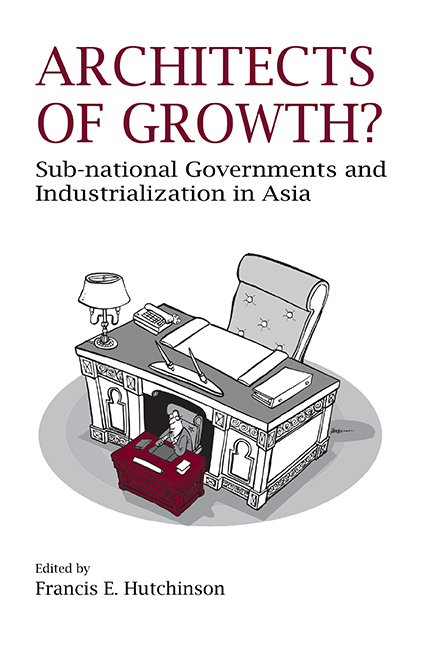Book contents
- Frontmatter
- Contents
- List of Tables
- List of Figures
- Foreword
- Preface and Acknowledgements
- Contributors
- Abbreviations
- I Introduction and Industry Overview
- II Cases from Industrializing Southeast Asia
- 3 A Relational View on Regional Development: The Case of the Electronics Sector in Cebu, Philippines
- 4 One Priority among Many? The State Government and Electronics Sector in Johor, Malaysia
- 5 Why Sub-national Governments in Thailand Are Not Creating Electronics Industry Clusters
- 6 Regional Economic Development and Perspectives for the Electronics Sector in Vietnam: The Case of Da Nang
- III Cases from China and India
- IV Cases from Industrialized Countries
- V Conclusion
- Index
4 - One Priority among Many? The State Government and Electronics Sector in Johor, Malaysia
from II - Cases from Industrializing Southeast Asia
Published online by Cambridge University Press: 21 October 2015
- Frontmatter
- Contents
- List of Tables
- List of Figures
- Foreword
- Preface and Acknowledgements
- Contributors
- Abbreviations
- I Introduction and Industry Overview
- II Cases from Industrializing Southeast Asia
- 3 A Relational View on Regional Development: The Case of the Electronics Sector in Cebu, Philippines
- 4 One Priority among Many? The State Government and Electronics Sector in Johor, Malaysia
- 5 Why Sub-national Governments in Thailand Are Not Creating Electronics Industry Clusters
- 6 Regional Economic Development and Perspectives for the Electronics Sector in Vietnam: The Case of Da Nang
- III Cases from China and India
- IV Cases from Industrialized Countries
- V Conclusion
- Index
Summary
Introduction
Malaysia is a quintessential Little Tiger, one of a group of Southeast Asian countries that managed a transition from a predominantly agriculture-based economy to one with a vibrant manufacturing sector. Once known for its spices, tin, and rubber, Malaysia now has a diversified secondary sector comprising textiles, chemicals, steel, transport equipment, and other products. The electrical and electronics (E&E) sector has been at the centre of Malaysia's structural shift, accounting for the greater part of manufacturing employment, investment, and export earnings (Yusoff and Bhattasali 2008).
The country's E&E sector is essentially concentrated in three firm clusters. In the north, Penang houses market-leading semiconductor and industrial equipment multinationals; a number of contract electronics manufacturers; and many supplier firms, including some local firms with world-class capabilities in the process automation and technology provision sectors. The Klang Valley, comprised of Kuala Lumpur and the surrounding state of Selangor, has a large number of firms in the consumer electronics, semiconductor, and domestic appliance sub-sectors. Johor, in the south of the country, houses the third concentration of firms which includes a large number of contract electronics manufacturers, as well as consumer electronics and computer peripheral producers (Yoon 2013; Rasiah 2002; JSICID 2011).
Available comparative data shows that multinational firms carry out tasks of different intensity in the three locations, and local firms have differing levels of technological capabilities and network strength (Best and Rasiah 2003; Rasiah 2008). Thus, while providing important elements of an overall assessment, a uniquely national-level perspective does not explain these intra-national differences in firm dynamics and technological capabilities.
Given that Malaysia is a federation, with a central government and thirteen state counterparts, an examination of state agency and policies at the sub-national level may shed light on the differential development of each of these firm groupings. While Malaysia's constitution assigns the bulk of responsibilities and revenue sources to the federal government, state governments do carry out important tasks relative to economic policy in general and industrialization in particular.
Research carried out on Penang has documented how its state government and economic development corporation played a role in promoting the development of its electronics sector through implementing targeted investment drives; providing specialized infrastructure; making strategic investments to diminish risk; addressing market failures regarding skilled workers; and seeking to foster inter-firm linkages (Singh 2011; Hutchinson 2008; Rasiah 1999).
- Type
- Chapter
- Information
- Architects of Growth?Sub-national Governments and Industrialization in Asia, pp. 87 - 120Publisher: ISEAS–Yusof Ishak InstitutePrint publication year: 2013

